TruRenu® Sustainable Flexible Packaging
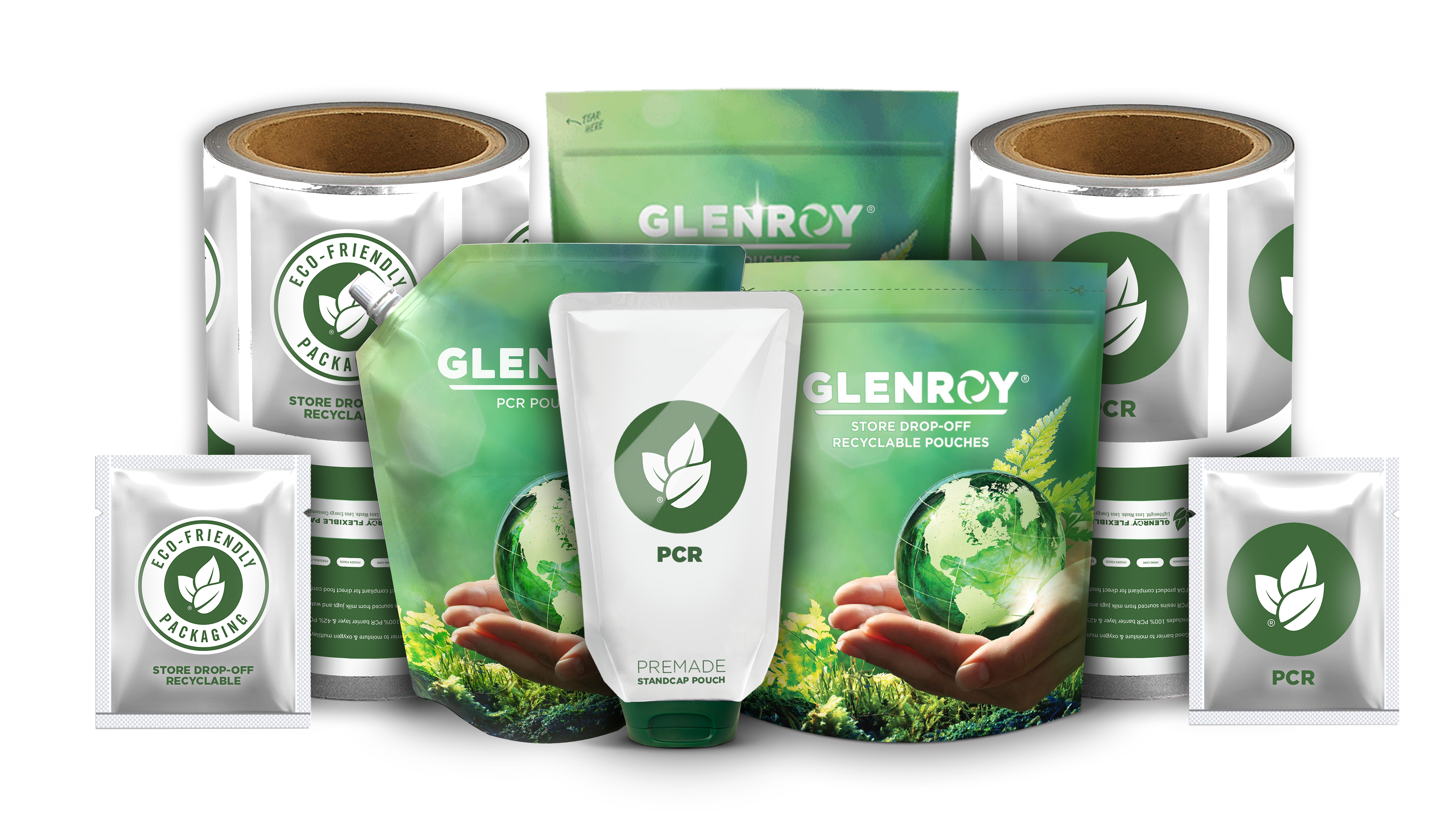
Did you know?
26 truckloads of unfilled glass jars is equal to 1 truckload of unfilled flexible pouches.
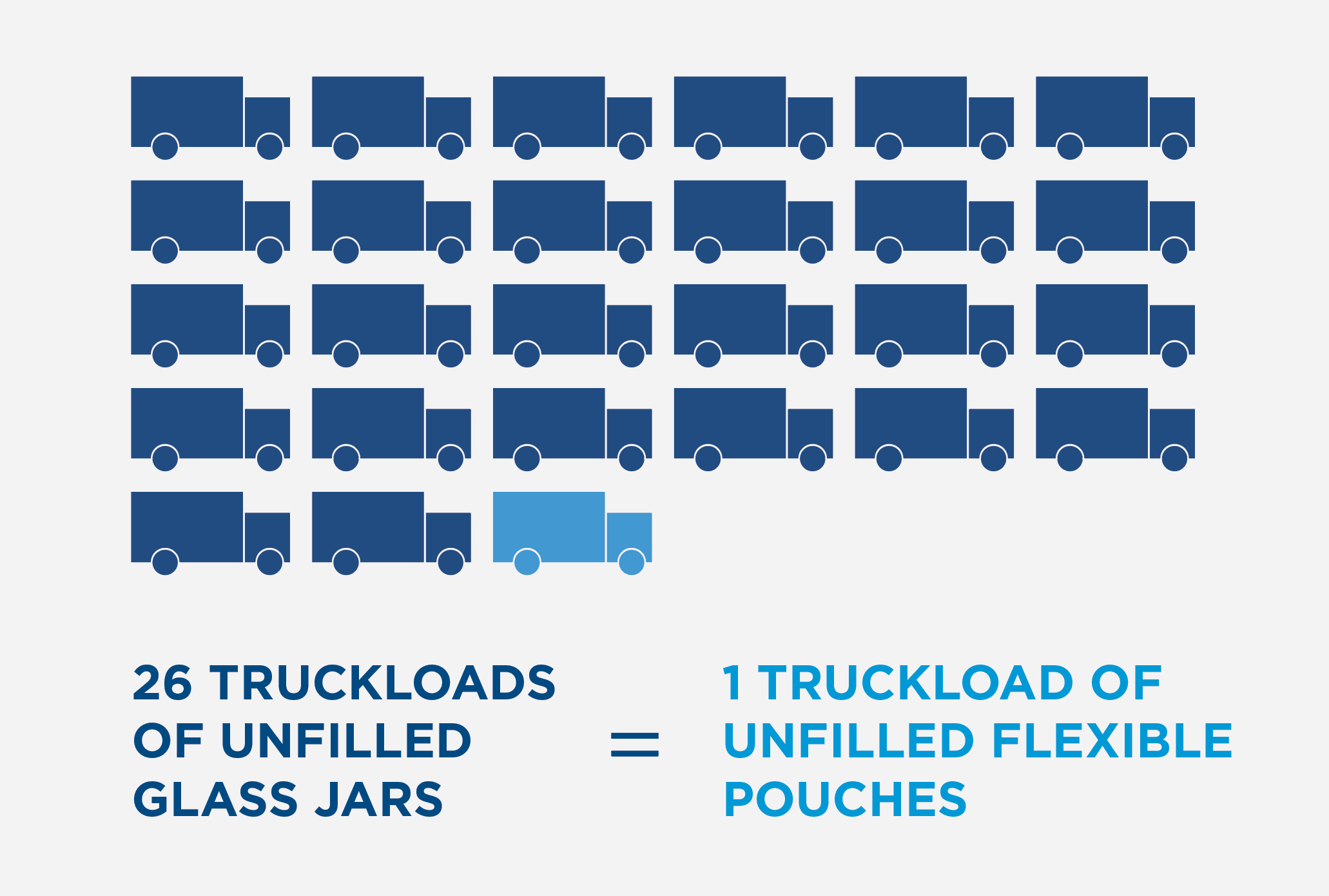
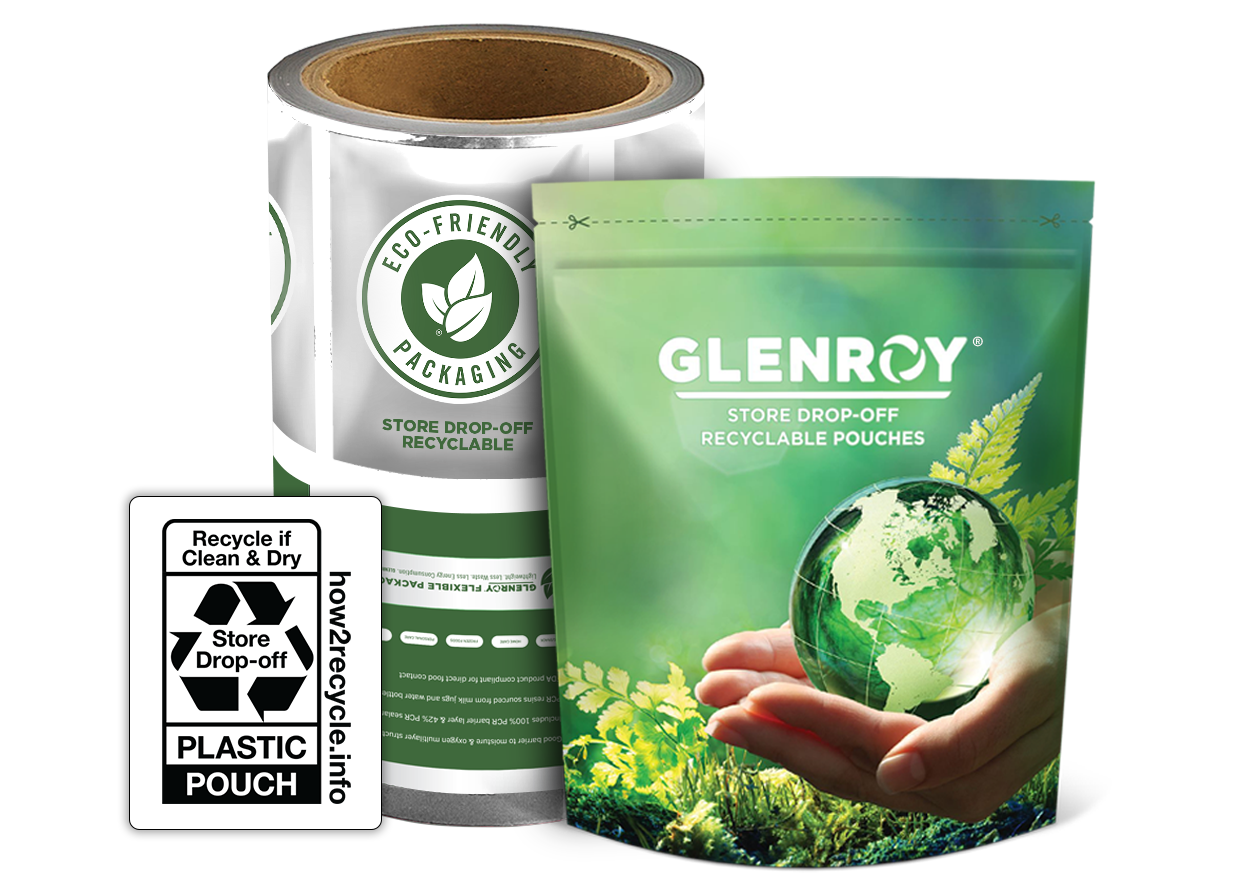
With multiple layers, and components made from many different materials, flexible packaging can be complex. We have a dedicated team of professionals committed to looking for new ways to reduce the environmental impact of our packaging. Helping consumers understand how to properly recycle our packaging reduces confusion and frustration, which can lead to less waste in our environment.
Learn more about TruRenu® store drop-off recyclable packaging
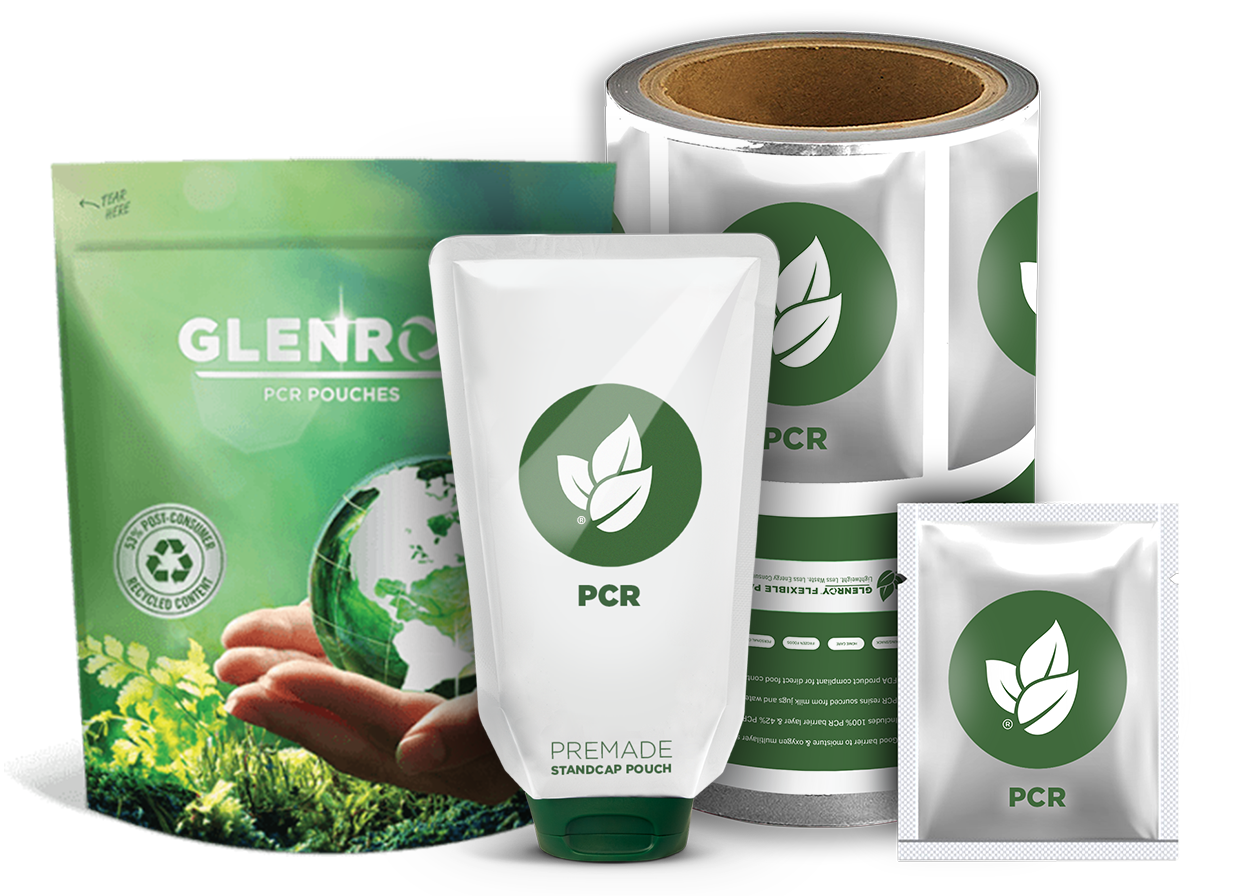
Our PCR packaging solutions are manufactured with resin that has been sourced from various plastic formats like milk jugs, juice jugs, and water bottles. Give your customers peace of mind knowing that they are doing their part purchasing packaging that is made with post-consumer recycled materials.

Flexible Packaging: A Sustainable Solution
As a whole, the technology and innovations of flexible packaging have led to packaging minimization, extended shelf life, and reduced carbon impact for brands in many industries. See the tables below for the specific ways flexible packaging has a positive environmental impact when compared to other packaging formats.
Table 1: Rigid Packaging vs. Flexible Packaging for Liquids
| Beverage Packaging | Product Weight | Packaging Weight | Product-to-Packaging Ratio | Packaging Weight per 100 g Product |
Energy Consumption MJ/8 oz |
Emissions Kg Co2 e /8 oz |
|---|---|---|---|---|---|---|
| Glass Bottle & Metal Cap | 8 ounces (236 g) | 198.4 g | 1:1 | 83.9 g | 3.36 | 0.29 |
| Plastic PET Bottle & Cap | 8 ounces (236 g) | 22.7 g | 10:1 | 9.6 g | 3.00 | 0.18 |
| Aluminum Can | 8 ounces (236 g) | 11.3 g | 21:1 | 4.7 g | 0.99 | 0.08 |
| Stand up Flexible Pouch | 6.75 ounces (199 g) | 5.7 g | 35:1 | 2.8 g | 0.45 | 0.02 |
Source: FPA/Battelle Memorial Institute, Sustainability Assessment of Flexible Packaging; and Flexible Packaging! Less Resources, Energy, Emissions, and Waste (brochure). Cradle-to-grave life cycle energy consumption and greenhouse gas emissions data developed for FPA by Battelle Memorial Institute. Packaging weight, product weight, and product-to-packaging ratio calculated by PTIS. Beverage assumed to be water.
Table 2: Non-carbonated Beverage Packaging Grams to Landfill
| Beverage Packaging | Product Weight | Packaging Weight | Packaging Weight per 100 g Product |
Recycle Rate | To MSW Landifll | To Landfill per 100 g Product |
|---|---|---|---|---|---|---|
| Glass Bottle & Metal Cap | 8 ounces (236 g) | 198.4 g | 83.9 g | 34% | 66% | 55.4 |
| Plastic PET Bottle & Cap | 8 ounces (236 g) | 22.7 g | 9.6 g | 29% | 71% | 6.8 |
| Aluminum Can | 8 ounces (236 g) | 11.3 g | 4.7 g | 58% | 42% | 2.0 |
| Stand up Flexible Pouch | 6.75 ounces (199 g) | 5.7 g | 2.8 g | 0% | 100% | 2.8 |
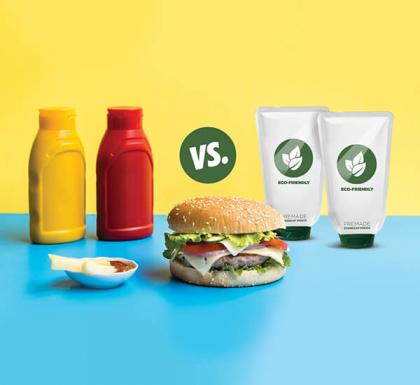
Inverted Pouches vs. Plastic Bottles
According to a recent Life Cycle Assessment (LCA) study by PTIS, choosing premade STANDCAP Pouches instead of rigid plastic bottles (including rigid inverted plastic squeeze bottles) results in up to:
- 63% less plastic (by weight).
- 61% less fossil fuel consumption.
- 62% less greenhouse gas emissions.
- 76% less water usage.
- 52% less landfill waste (even when factoring in plastic recycling rates).
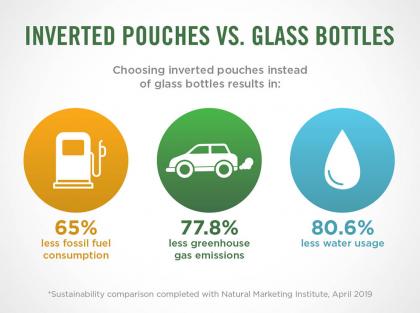
Inverted Pouches vs. Glass Bottles
According to a life-cycle assessment study (LCA) by the Natural Marketing Institute (NMI), inverted pouches greatly reduce environmental impact when compared to glass bottles. The results of this assessment show that STANDCAP inverted pouches:
- Reduce fossil fuel usage by 65%
- Reduce greenhouse emissions by 77.8%
- Reduce overall water usage by 80.6%
*Pouches also eliminate the need for a separate label or shrink sleeve.

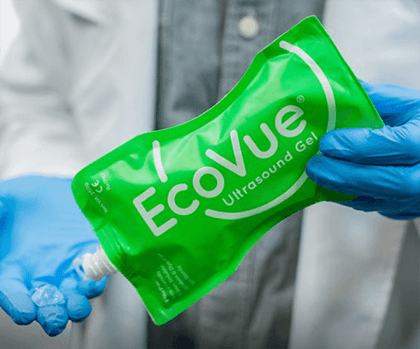

Packaging that Produces Less Waste
Unlike typical plastic bottles, which can waste about 14% of ultrasound gel left on the bottom, this lightweight flexible package design requires less energy to manufacture & transport and allows for up to 99.5% evacuation of the product, reducing the number of units consumed each year.
As a result, 1.5 million fewer containers and 800,000 less pounds of gel will end up in landfills. This reduced waste contributes to a yearly savings of $1.9 million for the industry.
